Looking for an in-depth review of the TaylorMade Golf Spider X Putter? You’ve come to the right place. In this article, we will answer all of the common questions people have about this putter, such as its pros and cons, and even give you a buyer’s guide to help you decide if it’s the right fit for your game. So whether you’re just starting out on the green or you’re a seasoned pro, read on for all the information you need to make an informed purchase.
Table of Contents
TaylorMade Spider X Putter
 Looking for a top-of-the-line putter that will help you up your game? Check out the TaylorMade Golf Spider X Putter. The X Philosophy behind the Spider X Putter is all about optimal stability and alignment, achieved through reengineering the mass properties of the head and introducing a new optically engineered True Path Alignment System.
Looking for a top-of-the-line putter that will help you up your game? Check out the TaylorMade Golf Spider X Putter. The X Philosophy behind the Spider X Putter is all about optimal stability and alignment, achieved through reengineering the mass properties of the head and introducing a new optically engineered True Path Alignment System. TaylorMade Spider X Putter Manual
Pros & Cons of TaylorMade Spider X Putter
Buyer’s Guide
Head Style
There are three primary head styles for putters: mallet, blade, and hybrid. Mallet putters are the most popular style on the PGA Tour. They’re characterized by their large heads and long shafts, which help to stabilize the club during your stroke. Blade putters are the traditional style of the putter, and they’re still quite popular among amateur golfers. They’re smaller than mallet putters and have shorter shafts, which make them easier to control. Hybrid putters are a combination of both styles, and they’re becoming increasingly popular as golfers try to find the perfect balance between stability and control.
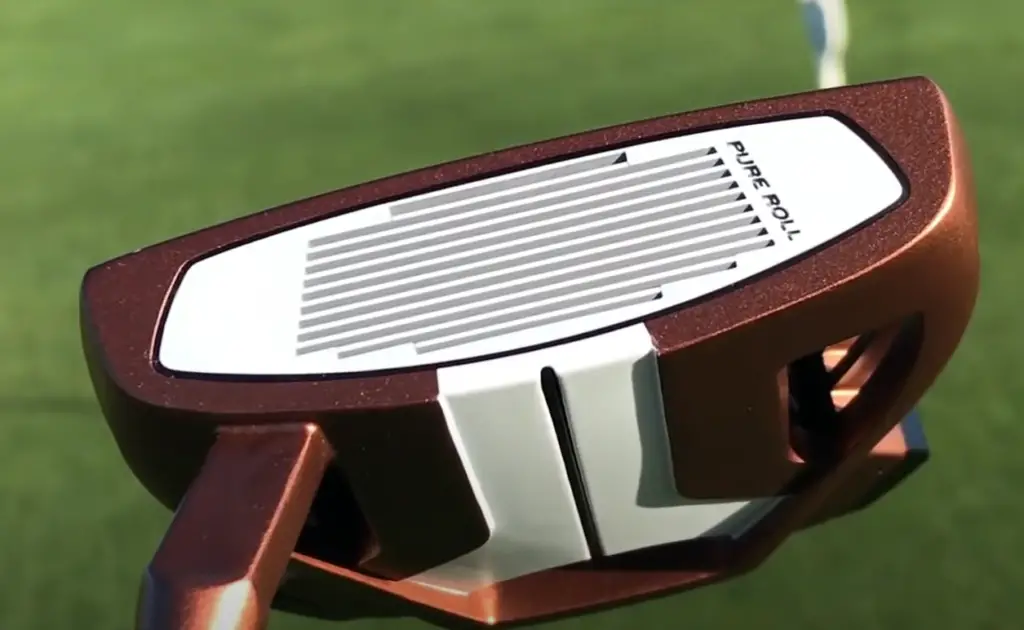
When it comes to choosing a head style, it ultimately comes down to personal preference. If you’re having trouble deciding, it’s best to try out all three styles and see which one feels the most comfortable for you. [1]
Length
The length of your putter is another important factor to consider. The standard length for a putter is 35 inches, but they can range from 33-36 inches.
It’s important to note that the length of your putter will also affect its weight. A longer putter will generally be heavier than a shorter one, so keep that in mind when choosing a length. [2]
Weight/Balance
The weight and balance point of a putter are two closely related factors. The weight of the putter head will affect how easily it swings, while the balance point determines where the club will sit in your hands. A heavier head will make it easier to control your stroke, but it may be more difficult to swing. A lighter head will be easier to swing but may not provide as much control. Ultimately, it’s up to you to decide what weight and balance point feel the most comfortable for your game.
How to choose a correct putter style
Now that you know the basics of putter styles, it’s time to choose the right one for your game. If you’re still unsure about which style to go with, here are a few factors to consider:
- Your putting stroke: Do you have a straight-back-and-through stroke or do you tend to hit the ball on an upward arc?
- The type of greens you typically play on: Are they fast or slow?
- Your budget: Putters can range in price from $30 to $300.
Keep these factors in mind when shopping for a putter, and you’ll be sure to find the perfect one for your game.
Discover the best lie angle
The lie angle of a putter is the angle between the shaft and the ground when the club is in its natural position. Lie angles can range from flat (0 degrees) to upright (90 degrees).
Finding the right lie angle for your putter is important because it affects how easily the club will make contact with the ball. If the lie angle is too flat, you may find that the club head tends to skip across the surface of the green. If it’s too upright, you may struggle to make solid contact with the ball. Ultimately, you want to find a lie angle that feels comfortable and gives you the best results.
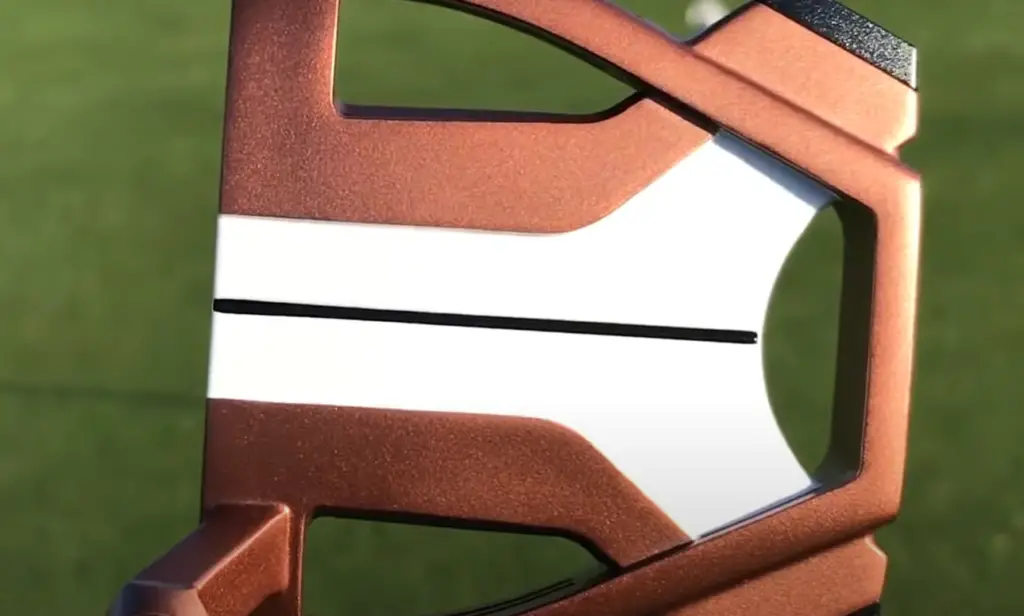
There are a few ways to discover your ideal lie angle. The first is to ask a professional at your local golf shop. They’ll be able to measure your lie angle and recommend a putter that’s right for you. Another option is to try out different lie angles at the driving range. Experiment with both flat and upright lies and see how they affect your shots. Finally, many online retailers offer lie angle adapters that allow you to adjust the lie angle of your putter without having to buy a new one. [4]
Once you’ve found the perfect lie angle for your game, you’ll be well on your way to sinking more putts than ever before.
Dial in the loft
The loft of a putter is the angle between the club face and the ground. Most putters have a loft between four and six degrees, but they can range from two to 12 degrees. The loft of your putter will affect how high or low the ball bounces when it hits the green. A higher loft will create a higher bounce, while a lower loft will create a lower bounce. [5]
Like lie angle, finding the right loft for your game is important because it affects how easily the club will make contact with the ball.
If it’s too high, you may struggle to make solid contact with the ball. Ultimately, you want to find a loft that feels comfortable and gives you the best results.Face-balanced vs toe-hang
When choosing a putter, you’ll also need to decide between a face-balanced and a toe-hang model. Face-balanced putters are designed for golfers with a straight-back-and-through stroke, while toe hang putters are designed for golfers with an arc in their stroke. If you’re not sure which type of putter is right for you, ask a professional at your local golf shop or try out different models at the driving range.
Once you’ve found the perfect putter style, loft and lie angle for your game, it’s time to take it out on the course and see how it performs. With a little practice, you’ll be sinking more putts than ever before.
Grip
The grip is one of the most important parts of any golf club. The grip is what you hold onto while swinging, so it’s important to choose one that feels comfortable in your hands. Putter grips come in a variety of sizes, shapes and materials, so there’s sure to be one that’s perfect for your game.
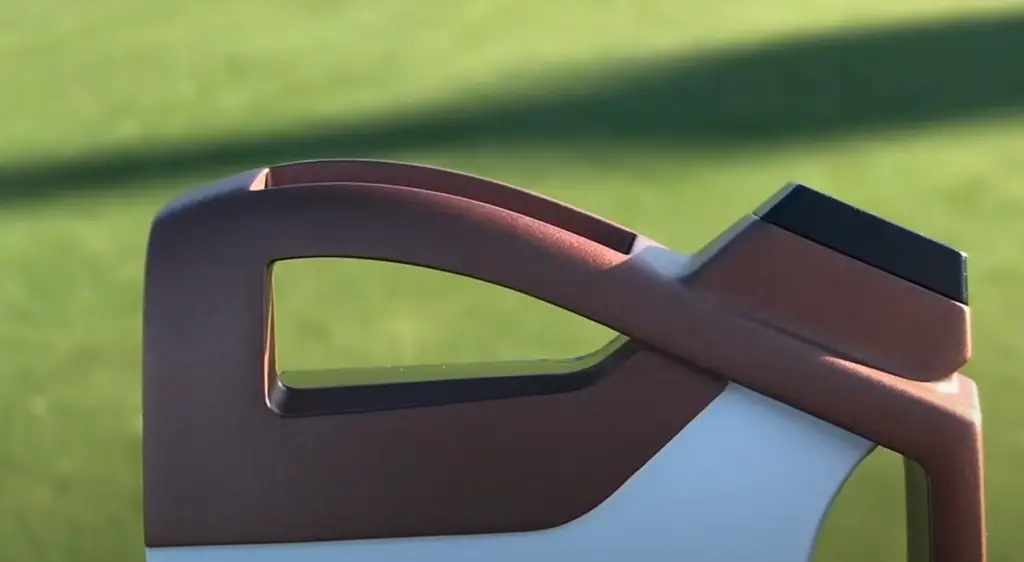
The size of the grip is one of the most important factors to consider. If the grip is too small, you may find it difficult to keep a firm grip on the club. If it’s too large, you may have trouble making a smooth swing. Ultimately, you want to choose a size that feels comfortable in your hands and gives you the best results.
Putter Head Designs
There are a few different putter head designs to choose from, each with its advantages and disadvantages. The three most common types of putter heads are blade, mallet, and counterbalance.
They’re typically made from steel or brass and feature a small, flat clubface. Blade putters are popular among golfers who prefer a simple design.Mallet putters have a larger clubhead that gives them more stability on the green. They’re typically made from aluminum or stainless steel and often feature alignment aids to help you line up your shots. Mallet putters are popular among golfers who want more forgiveness on their shots.
Counterbalance putters are the newest type of putter on the market. They have a heavy head that’s balanced with a weight in the grip. This design helps to keep your hands and arms relaxed while you swing, which can lead to more accurate shots. Counterbalance putters are popular among golfers who want a more stable feel during their swings.
FAQ
How do I know what putter is best for me?
The best way to find the perfect putter for your game is to experiment with different styles, loft angles, and lie angles. Many golf shops offer demo days where you can try out different clubs before you buy them. You can also ask a professional at your local golf shop for help finding the right putter for your game.
Once you’ve found a few putters that you like, take them out to the driving range and see how they feel during your swing. Pay attention to how easily the club makes contact with the ball and how accurately you’re able to hit your shots. Ultimately, you want to choose a putter that feels comfortable and gives you the best results.
What are the 3 types of putters?
The three most popular putter types are blade, mallet, and counterbalance. Blade putters have a historical design that has been used for centuries. Mallet putters feature a larger clubhead with more stability on the green. Counterbalance putters are the newest version of golf putting equipment available. Their huge head is balanced by weight in the grip.[6]
Each type of putter has its own advantages and disadvantages. The best way to find the perfect putter for your game is to experiment with different styles and see how they feel during your swing.
In the end, you want to select a putter that makes you feel comfortable and gives you optimal results.
What is the most important thing for a putter?
Golfers will often say that the most important thing for a putter is comfort. If a putter doesn’t feel comfortable in your hands, you’re not going to be able to make accurate shots. Putters come in a variety of sizes, shapes and materials, so there’s sure to be one that’s perfect for your game. Experiment with different models until you find one that feels good in your hands and provides the results you’re looking for.
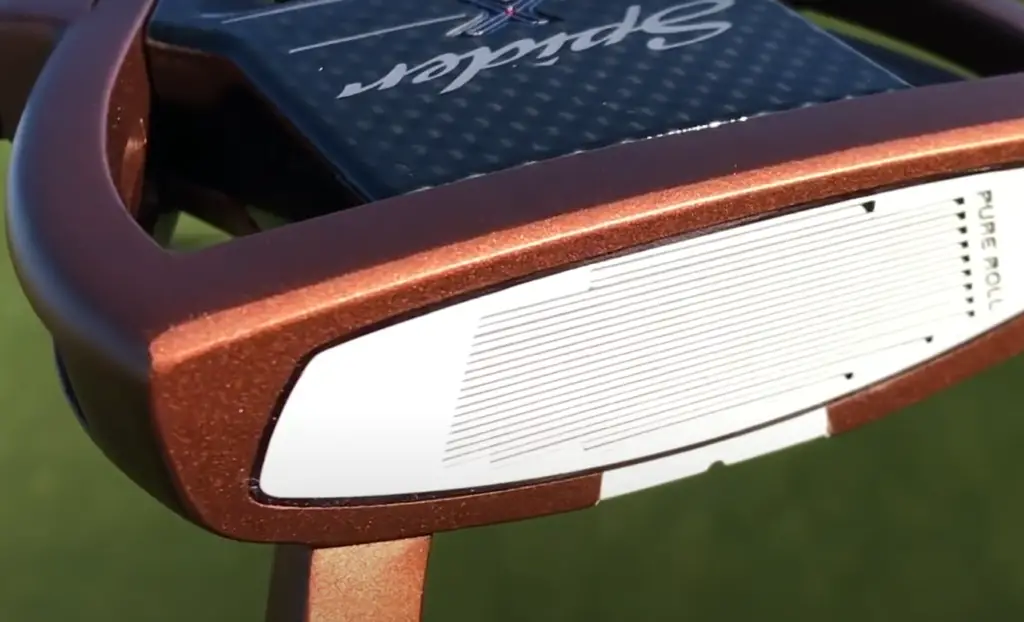
Another important factor to consider is the loft angle of the clubface. The loft angle is the angle between the clubface and the ground when the putter is resting on the green. A higher loft angle will result in a higher shot, while a lower loft angle will result in a lower shot. Experiment with different loft angles to see what works best for your game.
Is a heavy or light putter better?
There is no definitive answer to this question. Some golfers prefer a heavier putter because it provides more stability during the swing. Others prefer a lighter putter because it’s easier to control. Ultimately, it comes down to personal preference and what feels comfortable for you.
Experiment with different weights until you find one that gives you the results you’re looking for.
Video Guide: TaylorMade Spider X Putter
Conclusion
All in all, the Spider X putter is a great choice for golfers of all levels. It has a well-balanced design and feel that makes it easy to control your shots. If you’re looking for a new putter to improve your game, the TaylorMade Golf Spider X should definitely be at the top of your list. Have you tried this putter out? What did you think? Let us know in the comments below!
References:
- https://www.golfwrx.com/642025/should-you-be-using-a-blade-or-mallet-putter/
- https://www.independentgolfreviews.com/what-length-putter-do-i-need/
- https://southamptongolfclub.com/what-lie-angle-should-my-putter-be-does-it-matter/
- https://www.perthgolfonline.com.au/blog/post/hosel-adjustments-and-charts-what-it-all-means
- https://golf.com/gear/putters/putter-loft-importance-3-things-gear-101/
- https://www.golfmagic.com/equipment-news/putters-10-things-you-need-know-purchasing-your-next-blade-or-mallet



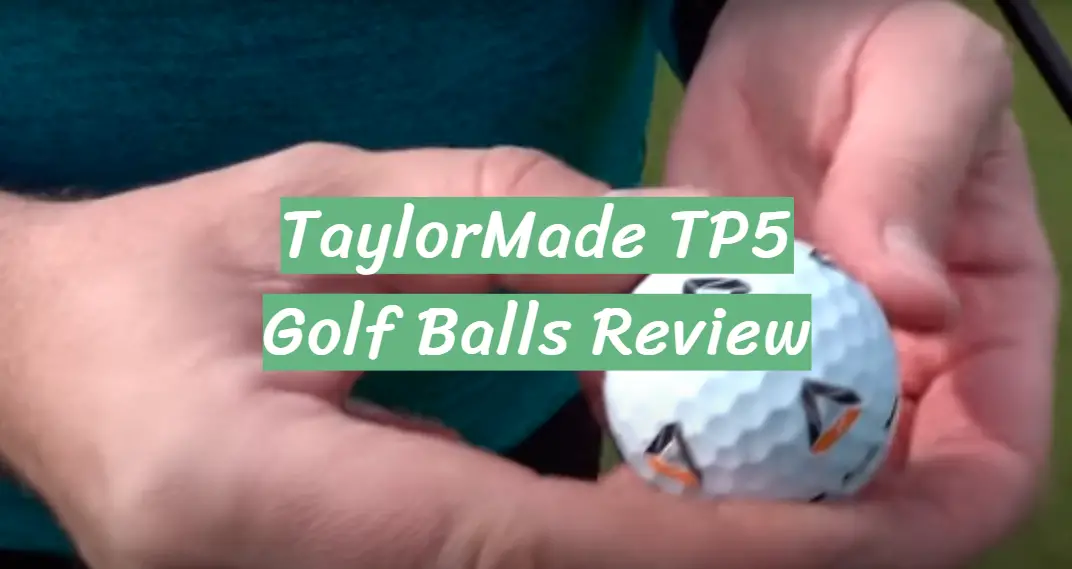


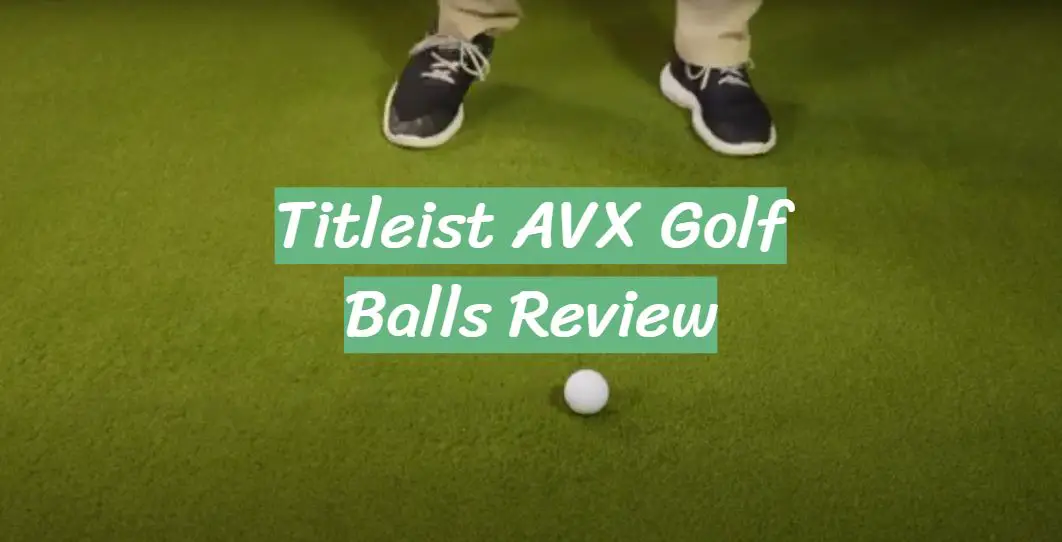
Leave a Reply